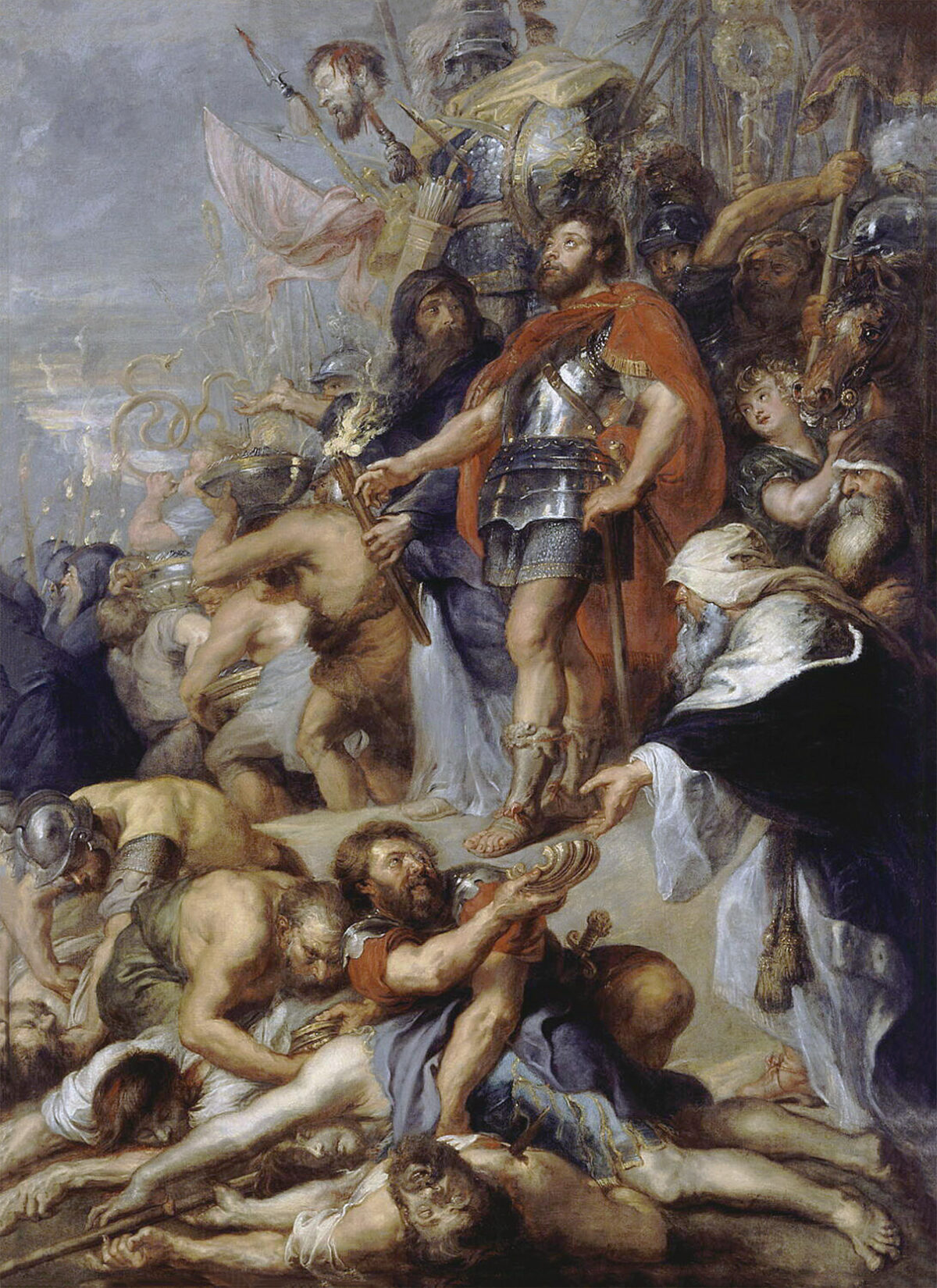Judas Maccabeus (190-160 bce)
The third of five sons born to Mattathias of the Hasmonean family, priest (cohen) of Modein—the others being Eleazar, Simon, John and Jonathan—the man more widely known by his Greek name was known in Hebrew as Yehuda HaMakab, or Judah the Hammer. Judas was a cohen in his own right and would have remained so had his Seleucid overlord, Antiochus IV Epiphanes (“God Manifest”), not sought to promote homogeneity in his multi-ethnic kingdom by imposing Hellenic culture and religion on all his subjects in 168 bce. That included installing images of Hellenic gods in the Second Temple of Jerusalem, provoking a revolt by Mattathias, his sons and other Jewish pietists.
During this war for control over Judea, Judas came to the fore. After winning a string of victories, he led his makeshift army into Jerusalem on the 25th day in the Hebrew month of Kislev (approximately December), 164 bce. In the course of cleansing the Temple, tradition has it that there was only enough oil to light it for a single day, but it burned through eight nights until more oil was found.
The fighting was far from over, however. Eleazar was killed in 161 and at Elasa in 160. Judas was outgeneraled by Bacchides and died fighting. His burial ended with a quotation from King David’s lament to King Saul: “How the mighty have fallen!” Jonathan and Simon subsequently died, leaving John the last Maccabee standing by 142 bce, when Judea finally won autonomy within the Seleucid kingdom and independence in 141.
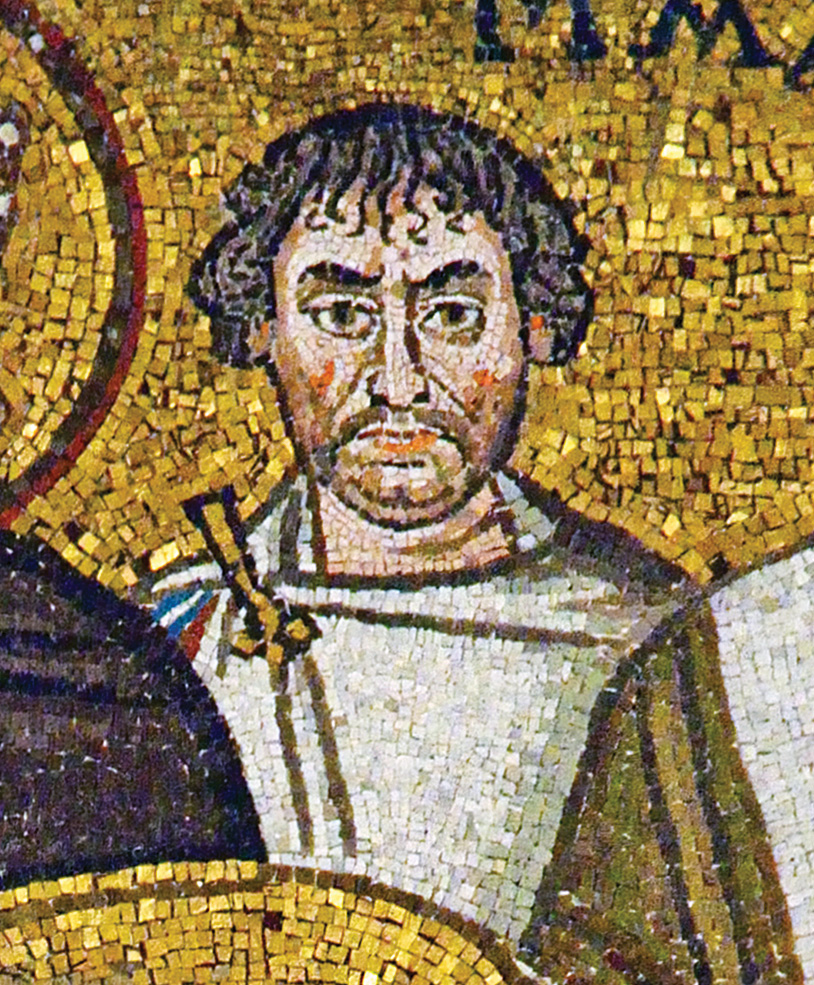
Narses (c.ad 478-568)
The exact dates of Narses’ birth and death are uncertain, as is how he came to be castrated. What is known is that he was a Romanized Armenian who served as steward, chief treasurer and grand chamber of the court to the Eastern Roman Emperor Justinian I.
He played a vital role in putting down the Nika riots on 532, but there is no evidence of military training leading to Justinian’s ordering him in 538 to Italy, where Count Flavius Belisarius, after having conquered the Vandals in North Africa in 533, was trying to wrest the Western Roman Empire from the Ostrogoths. Although Narses demonstrated a surprising grasp of command, he and Belisarius did not trust one another and Justinian recalled Narses. Working with minimal resources, Belisarius conduced a brilliant defense of Rome in 538, but in 541 Justinian, suspecting his loyalty, reassigned him to fight the Sassanians in Mesopotamia. Narses took Belisarius’ place in Italy and by June 551 was the supreme commander at age 73 with a string of victories. In 554 the undersized eunuch was feted to the first Triumph held in Rome in 150 years—and the last. On Nov. 14, 565, Justinian died and the new emperor, Justin II, recalled Narses to Constantinople in 567. Some accounts claim he died enroute in April 568, but others describe his death in peaceful retirement in 574 at what might have been age 96—itself an achievement in the treacherous cauldron of Byzantine politics.
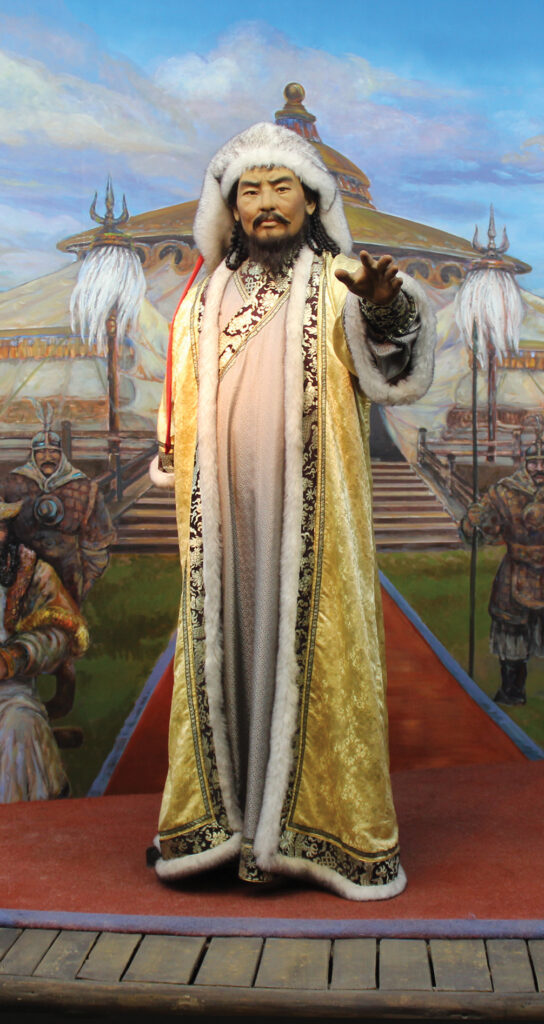
Genghis Khan (c. 1162-1227)
Born to a Mongol chieftain of the Borjigin clan, Temujin was eight when his father died. Certainly he would have learned the standard Mongol mounted warrior repertoire, but his accomplishments had gone far beyond that by 1206, when a kurultai of his peers elected him their first khagan, under the name of Genghis Khan. Among the most intriguing mysteries surrounding his rise to power is how he learned, hands-on, to forge alliances, turn an unwieldy collection of steppe warriors into a vast, well-disciplined army capable of conquering continents and, while he was at it, create a political entity of unprecedented scope to administer his holdings, complete with a codified legal system—all conceived virtually from scratch.
Although the victims of his ruthless expansion of empire have been estimated as high as 17 million—one-fifth the earth’s population at the time—Genghis Khan conquered the largest contiguous land mass in history and laid the foundation for a meritocracy allowing universal religious tolerance, which in times of peace connected the western world by pan-Eurasian trade. All this was without precedent in the Mongol world, but it lasted a quarter of a millennium. Is it any wonder that, however controversial he is elsewhere, Genghis Khan is still at the top of Mongolia’s hierarchy of national heroes?
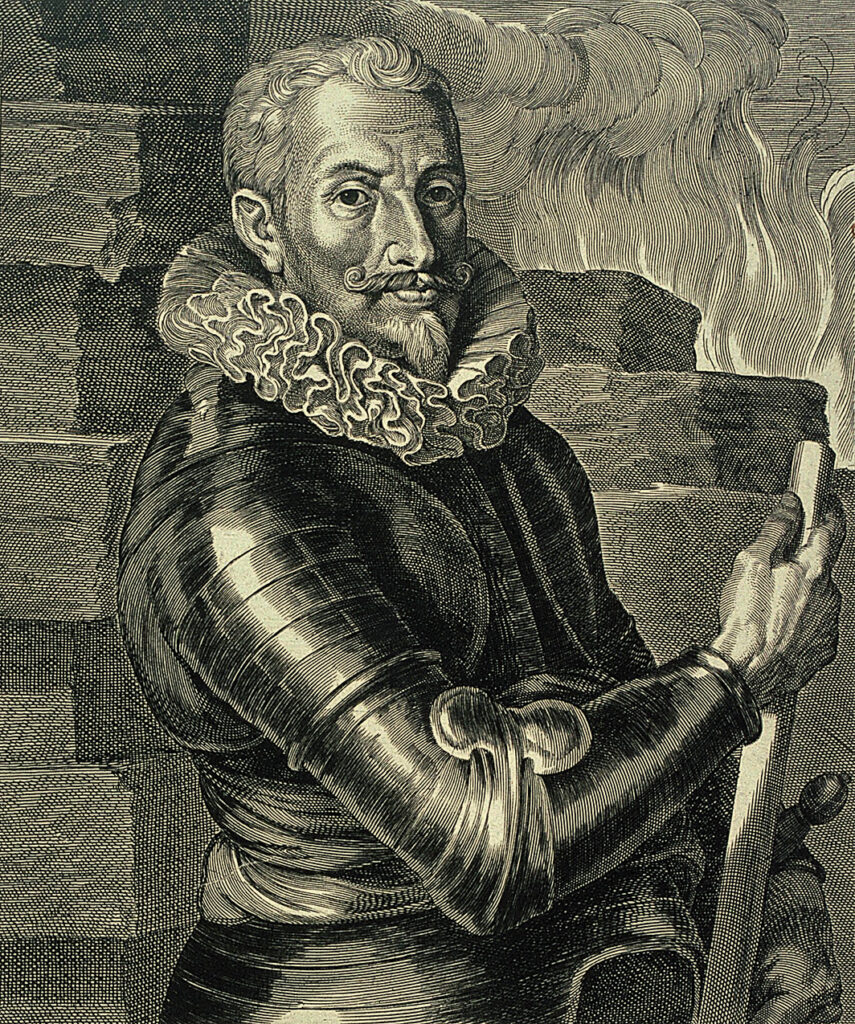
Johann Tserclaes, Count of Tilly (1559-1632)
Born in the Brabant in the Spanish Netherlands (now Belgium), Johann Tserclaes, Count of Tilly attended Jesuit school in Cologne, but at age 15 enlisted as a soldier in the Spanish army against the Dutch in the Eighty Years War. In 1600 he served in a mercenary unit with the Holy Roman Empire fighting Ottoman forces in Hungary and Transylvania. It was not uncommon for professional soldiers to learn hands-on as they rose in the ranks in the 17th century, but Tilly was exceptional in that he ascended from private to field marshal in just five years. In 1610 Duke Maximilian I gave him command of the Catholic League.
When the Thirty Years War broke out in Bohemia in 1618, Tilly’s victory at White Mountain in 1620 knocked Bohemia out of the conflict at almost the beginning. As other Protestant countries rose against the Empire, Tilly defeated each in turn, seeming to be invincible.
Tilly’s career began to tarnish when King Gustavus II Adolphus put the Thirty Years War through a new phase with his innovatively mobile Swedish army. After a 20-day siege, on May 20, 1631 Tilly’s forces stormed Magdeburg and for the first time he lost control over his troops, who butchered 20,000 of the city’s 25,000 population. On Sept. 17, Tilly confronted Gustavus at Breitenfeld and was convincingly outmaneuvered and beaten, suffering 27,000 casualties. Tilly scored a modest victory at Bamberg on March 9, 1632, but at Rain am Lech on April 15 he was struck in the thigh by an arquebus round and died of osteomyelitis in Ingolstadt on the 30th.
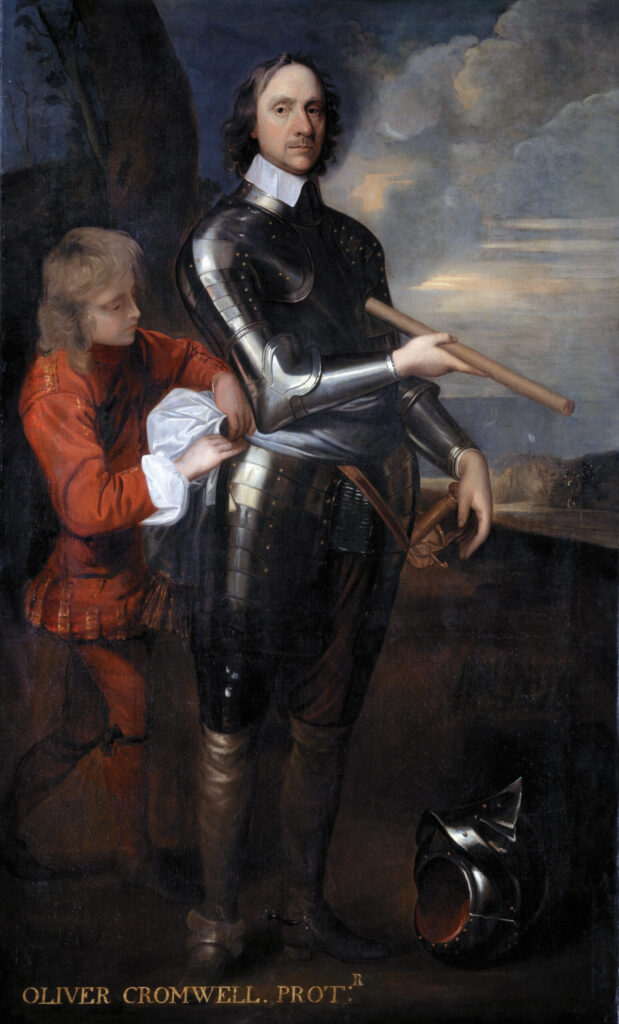
Oliver Cromwell (1599-1658)
When the English Civil War broke out, its most famous—and notorious—figure was known among the merchant community and had been a member of Parliament for his home county of Huntingdon in 1628-29 and 1640-42. His only military experience had been raising a cavalry troop in Cambridgeshire for the Parliamentarians, which arrived too late to participate in the opening battle at Edgehill on Oct. 23, 1642. Oliver Cromwell proved avid at learning from experience, most notably at Gainesborough on July 23, 1643, at which point he was a colonel. He was involved in redeveloping the Parliamentary forces into a “New Model Army,” which proved its worth in the pivotal battles of Marston Moor in July 1644 and Naseby on June 14, 1645. By 1652 Cromwell’s subsequent campaigns in Scotland and Ireland sealed his place among Britain’s most successful generals. If appraised by his own standard, however—“warts and all”—he is also remembered as a regicide (he was the third of 59 to sign King Charles I’s death warrant), the revolutionary who dissolved Parliament and made himself “Lord Protector,” i.e. dictator, and one of those oppressors the Irish still love to hate.
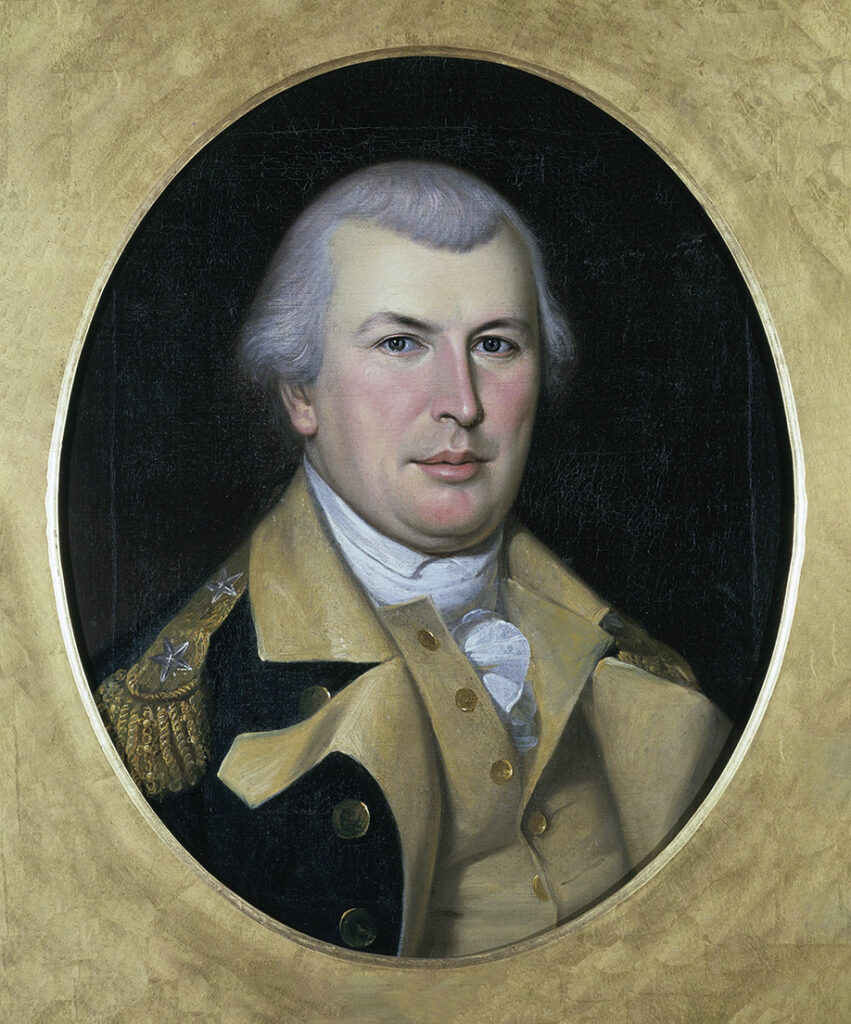
Nathanael Greene (1742-1786)
Born in Warwick, Rhode Island, Nathanael Greene was running a mill when the American Revolution broke out, but he was an avid reader with—despite being a Quaker—a fascination with military science. That and his advocating the break with Britain led to his being expelled from his congregation, although he still regarded himself as a Quaker. When the battles of Lexington and Concord occurred, Greene’s only contribution was to form a militia unit, the Kentish Guard. On June 14, 1775 Greene met Maj. Gen. George Washington, the new commander of the Continental Army, in Boston, and the two became close friends. Serving as quartermaster-general, Greene distinguished himself in combat at Brandywine Creek, Valley Forge and Monmouth Court House. On Dec. 2, 1780 Washington sent Greene to Charlotte, N.C., where he reorganized the beaten Continental forces in the southern colonies and set out to retake them from British Lt. Gen. Charles Cornwallis’ army. Greene choreographed an artful campaign of fighting retreats, climaxing at Guilford Court House, N.C., on March 15, 1781. Although Cornwallis ended up holding the ground and technically winning the battle, the 633 casualties he suffered compelled him to disengage and retire to Virginia. While Cornwallis was trapped at Yorktown, Greene took the offensive, driving the last British in the South from Charleston, S.C. on Dec. 14, 1782. Before his death of heatstroke in Georgia on June 19, 1786, Greene summed up how he wore Cornwallis down: “We fight, get beat, rise and fight again.”
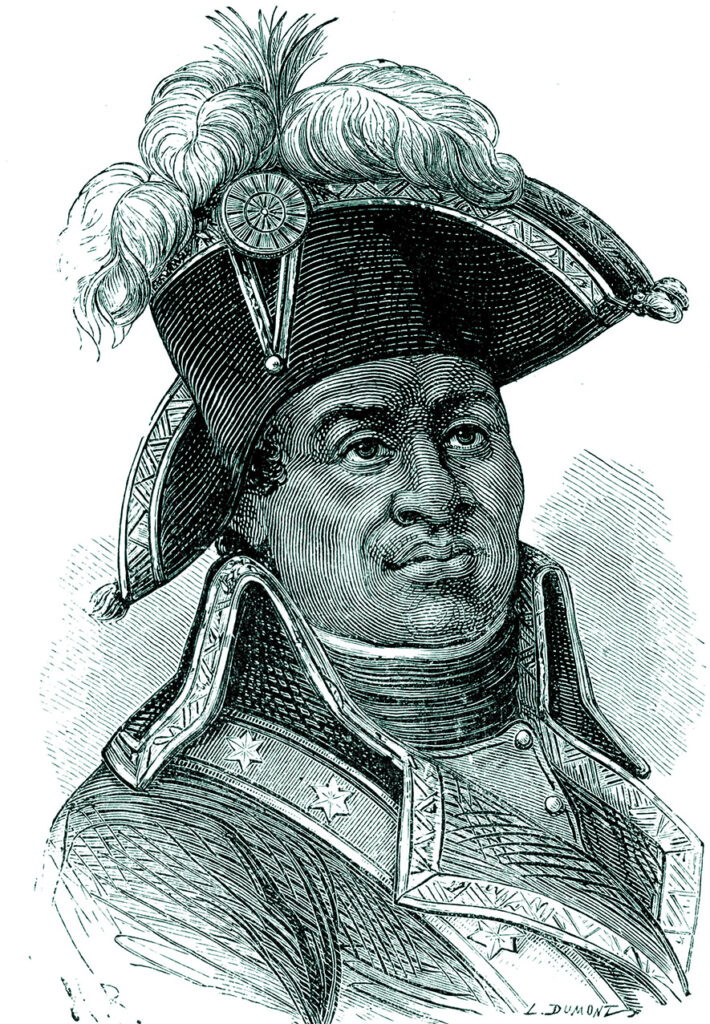
François-Dominique Toussaint Louverture (1743-1803)
The son of an educated slave on French-owned Saint-Domingue, François-Dominique Toussaint got some education of his own from Jesuit contacts while serving as a livestock handler, herder, coachman and steward until 1776, when he attained freedom. A slave revolt broke out between oppressed blacks and their white and mulatto overseers in August 1791. By 1793 he was leading rebels in a self-developed guerrilla force and had adopted the surname “Louverture” (“opening”). Later that year he and his followers helped a newly-Republican France fight off Spanish and British forces and was encouraged to learn that the French National Assembly ended slavery in May 1794. Over the following years Louverture displayed a remarkable grasp of civil leadership, restoring the economy in 1795 and overrunning Spanish San Domingo in January 1801, declaring the liberation of its white, black and mulatto population. In January 1802, however, Sainte-Domingue was invaded by a French army led by Maj. Gen. Charles Victoire Emmanuel Leclerc, brother-in-law of First Consul Napoleon Bonaparte, with orders to reinstate slavery on the island. Overwhelmed and losing followers, Louverture agreed to lay down his arms in May and retire to his plantation. Instead, Bonaparte ordered his arrest. He died in Fort-de-Joux in the Jura Mountains on April 7, 1803.
Bonaparte’s treachery backfired. Leclerc died of yellow fever in November 1802. On May 18, 1803 Bonaparte made some quick cash for his European operations by approving American President Jefferson’s Louisiana Purchase, effectively writing off his ambitions in the New World. On Jan. 1, 1804 one of Louverture’s disciples, Jean-Jacques Dessalines, declared himself governor-general of Haiti, the world’s first black republic.
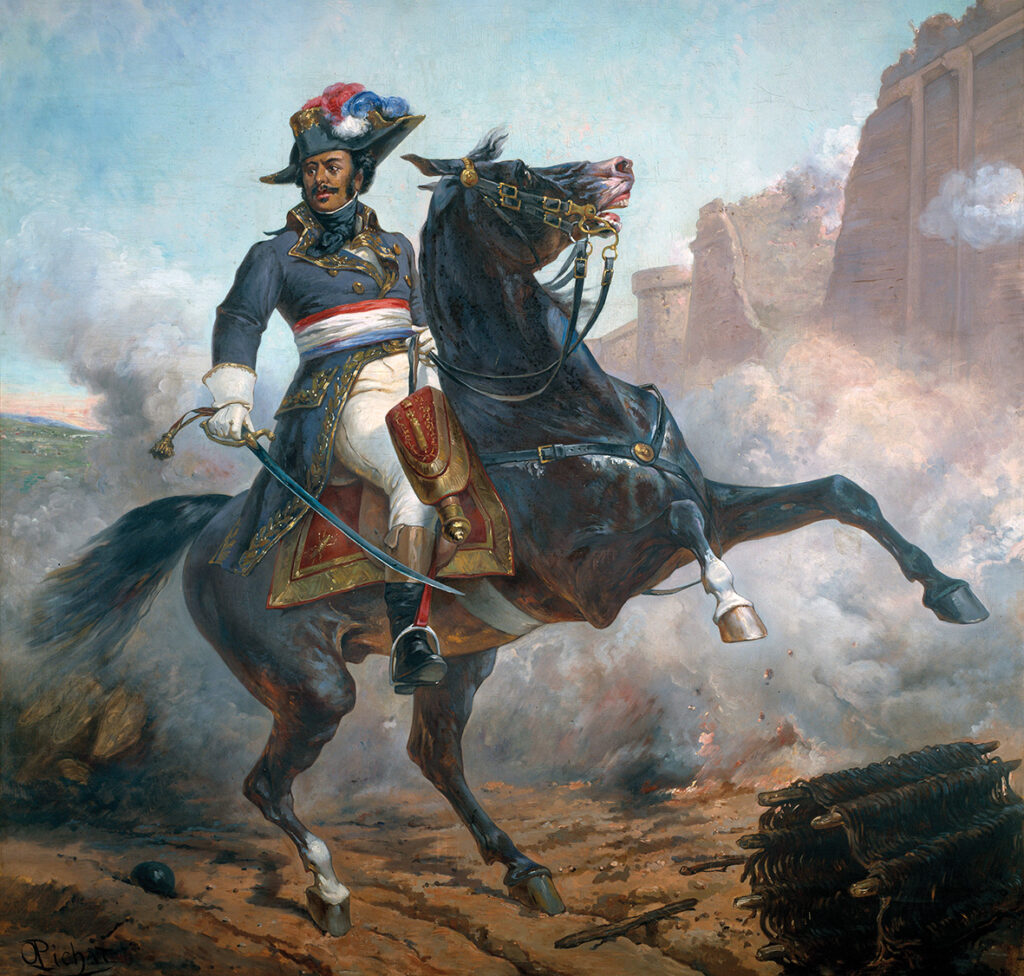
Thomas-Alexandre Dumas-Davy de la Pailleterie (1762-1806)
Thomas-Alexandre Dumas-Davy de la Pailleterie was the issue of Alexandre Davy, Marquis de la Pailleterie, a minor French noble plantation owner in Jérémie, Saint-Domingue (now Haiti), and one of his slaves, Marie-Céssette Dumas (whose surname Thomas-Alexandre adopted). The boy accompanied his father to France, where he could be free and get an education. In 1786, however, he enlisted in the French army’s 5th Dragoon Regiment (Queen). When the French Revolution broke out, he found numerous opportunities to show his military talents. On June 2, 1792 he was promoted to corporal, but over the next few years he was commissioned a lieutenant, then rose to lieutenant colonel and, in July 1793–the first person of African descent in history to attain the rank of brigadier general. Although not the most gifted strategist, he was exceptionally strong and reveled in leading by example. Among others, Dumas commanded the Army of the West in 1796 and the Army of Italy in 1796. On March 25, 1797, during a fighting retreat from Brixen and Botzen in the Tyrol, Dumas held the Brixen bridge against an Austrian cavalry squadron singlehanded. From 1798 to 1799 he served in Napoleon Bonaparte’s Army of the Orient.
Retiring in 1802, Dumas died of stomach cancer in 1806. Undoubtedly his lifetime of adventure inspired his son, Alexandre Dumas Sr., to write adventure novels, such as The Three Musketeers, The Man in the Iron Mask and The Count of Monte Cristo. His grandson, Alexandre Dumas Jr. also became an esteemed novelist and playwright, best known for La Dame aux Camélias.
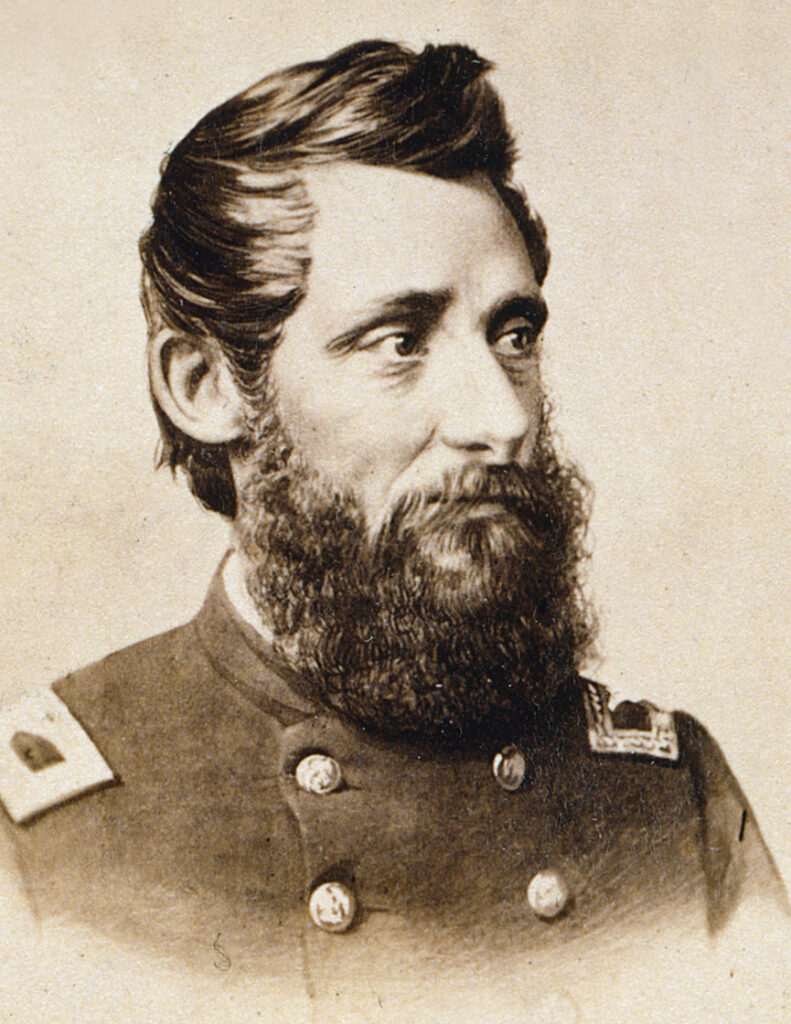
Benjamin H. Grierson (1826-1911)
One of the iconic names in American Civil War cavalry had no military training and was afraid of horses. Born in Pittsburgh, Pa. on July 8, 1826, Benjamin Henry Grierson was nearly kicked to death by a horse at age eight and distrusted the beasts ever since. Educated in Ohio, he became a music teacher and shopkeeper in Illinois when war broke out and joined the U.S. Army at Cairo on May 8, 1861, as a volunteer aide to Brig. Gen. Benjamin M. Prentiss. On Oct. 24, however, Grierson was assigned to the 6th Illinois Cavalry and on March 26, 1862 his men elected him colonel.
Mastering his horse problem, Grierson led his troopers on raids and skirmishes throughout Tennessee and Mississippi. This climaxed with a diversionary raid in which Grierson led 1,700 troopers of the 6th and 7th Illinois and 2nd Iowa Cavalry regiments from La Grange, Tenn. on April 17, 1863 600 miles to Baton Rouge, La. on May 2. A step ahead of Confederate pursuers, Grierson’s raiders inflicted 100 casualties, took 500 prisoners, captured 3,000 arms and destroyed 50 to 60 railroad and telegraph lines. Of greatest strategic importance, the raid diverted a division’s worth of Confederate soldiers while Maj. Gen. Ulysses Grant’s forces slipped south of the Mississippi fortress of Vicksburg, leading to its July 4 surrender. After the war, Grierson decided to make a career of Army service, spending most on the frontier, his commands including the 10th U.S. Cavalry Regiment (Colored). On April 5, 1890 he was given a rare promotion to brigadier general in the Regular Army, shortly before retiring on July 8 of that year.
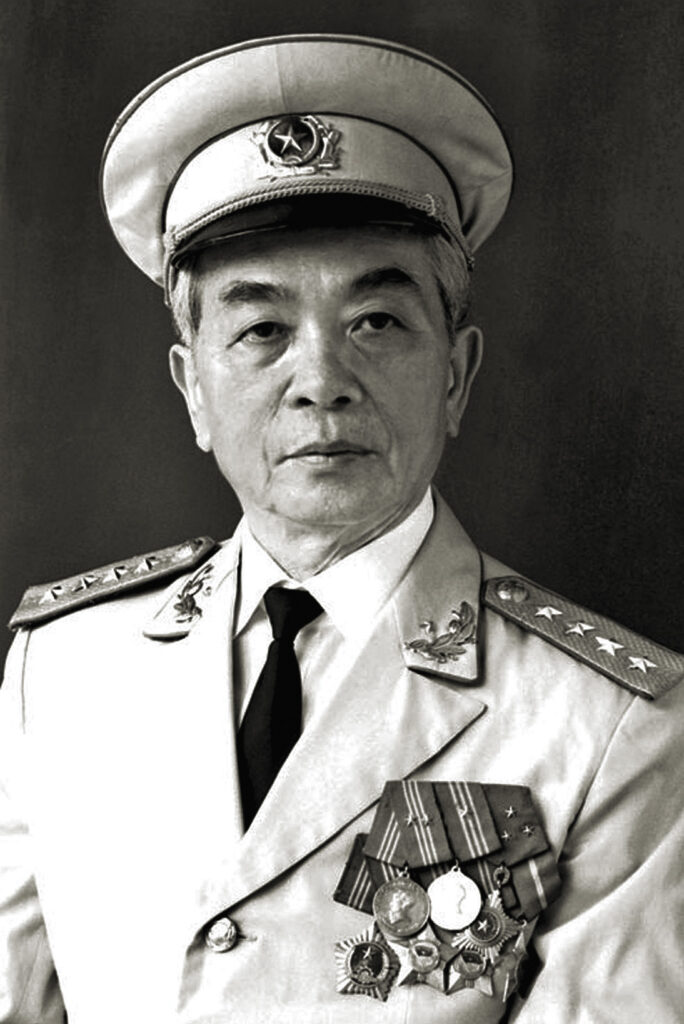
Vo Nguyen Giap (1911-2013)
The son of a well-to-do farmer who died in a French prison, Vo Nguyen Giap attended a Catholic lycée in Hue, joined the Indochinese Communist Party in 1931, gained a law degree in 1938 and worked as a history teacher while self-studying military history. In May 1940 he met Ho Chi Minh in China, where he learned tactics and strategy as practiced by Mao Zedong. By the end of World War II Giap was Minister of Defense for the communist-nationalist People’s Army of Vietnam (PAVN).
Between 1946 and 1954 Giap blended guerrilla and conventional warfare, winning some campaigns and suffering some stinging defeats but learning from experience. His decisive victory over the French at Dien Bien Phu in 1954 shocked the Western powers, as did his success in wearing down U.S. forces between 1965 and 1973. Giap viewed himself as more soldier than politician, which may explain his being sidelined by North Vietnamese General Secretary Le Duan, whose “big battle” strategy prevailed over Giap’s during the 1968 Tet and 1972 Easter offensives, resulting in bloody tactical defeats. In the end, the PAVN prevailed over the American-backed Saigon government in 1975. In 1978 Giap oversaw an invasion of Kampuchea that toppled Pol Pot’s radical Maoist Khmer Rouge government. When the Chinese retaliated with a punitive expedition into Vietnam on Feb. 12, 1979, the PAVN’s stout defense convinced the invaders to withdraw on March 16.
Although Vo Nguyen Giap is widely touted as one of the military geniuses of his century, much of his self-taught strategy and tactics could only have worked in Indochina’s unique conditions in the second half of the 20th century.

